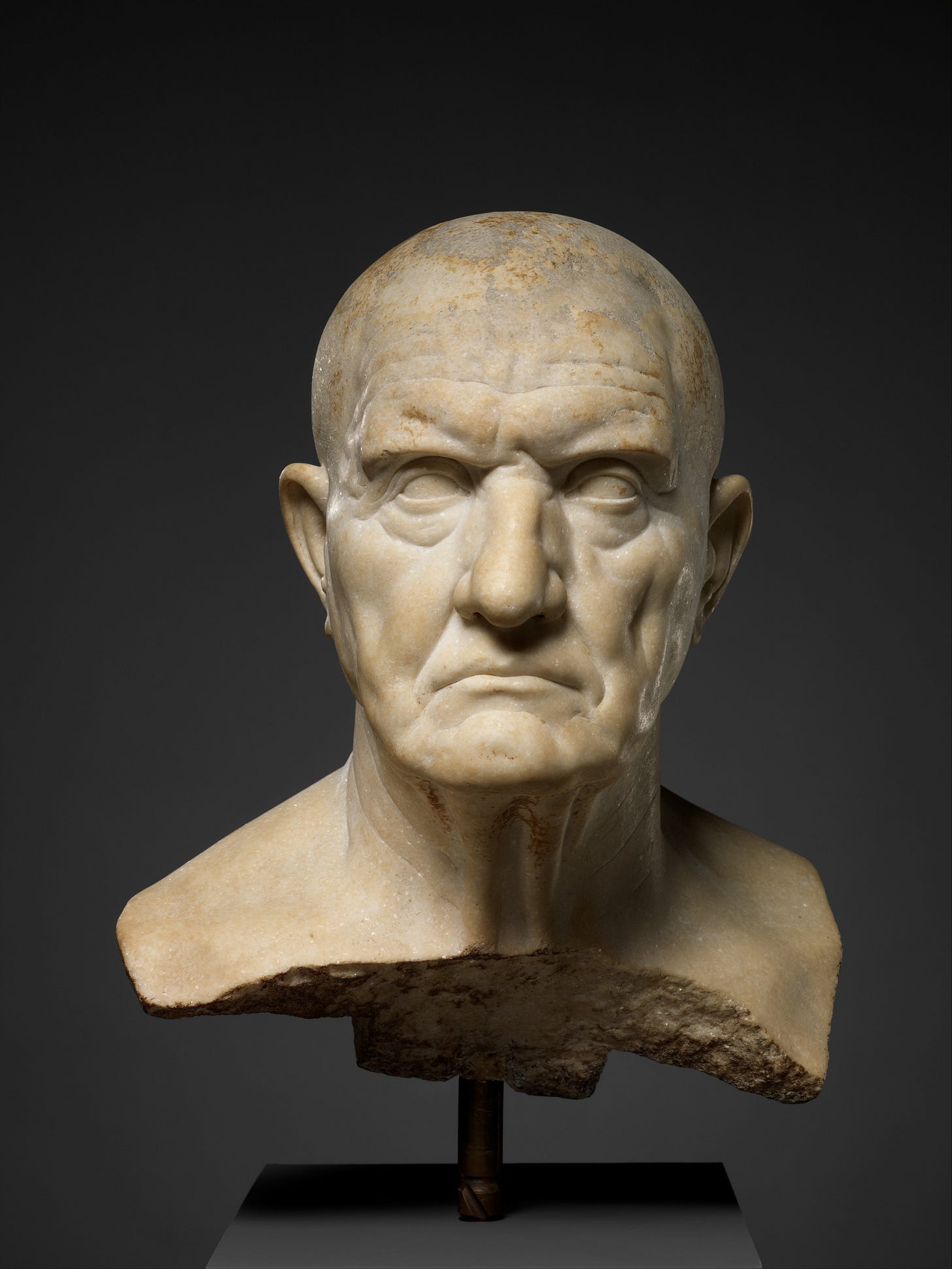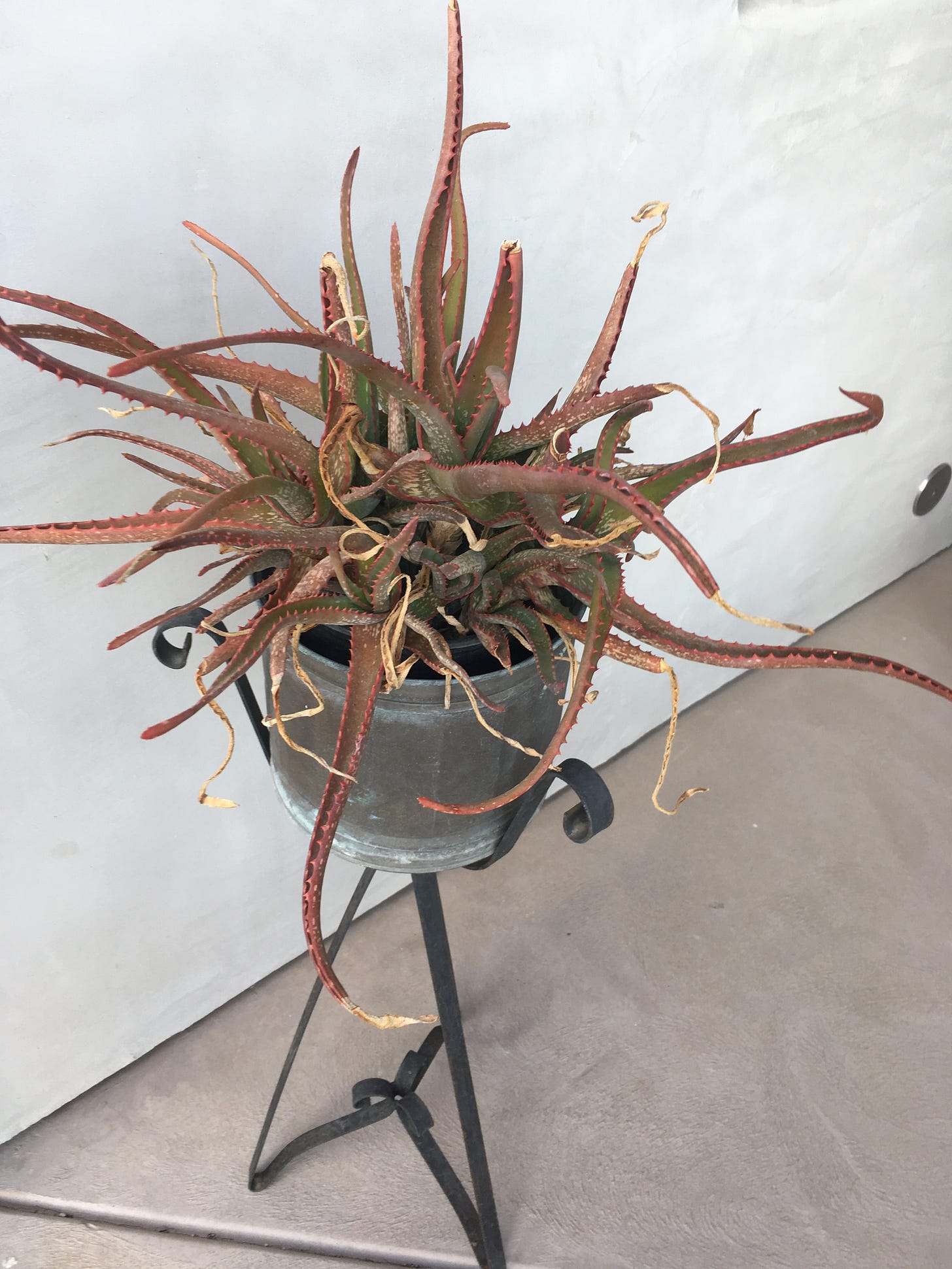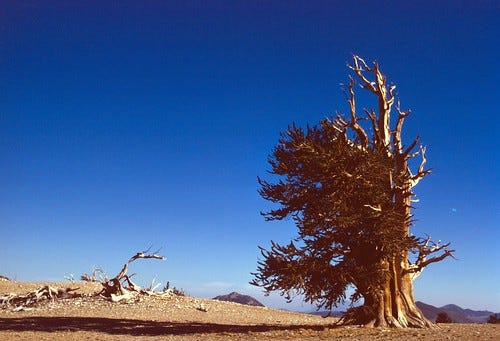Garden Aisle: The Veristic Style Planting of Succulents
A statuary treatment for sculptural plants
I’m no fan of the Roman Empire. A society of slavers even during their republican era, the Romans wanted maximum liberty for a few of themselves, and bondage or ruin for everyone else. The idea that our American foundering fathers (thank you, thank you, I’ll be here all week) sought to copy so many aspects of Roman society and iconography in an irony-free manner is something I’d love to read a book about. If you have doubts about how much the early American republic wanted to identify itself with Rome, check out this pair of sculptures (masterminded by none other than noted slaver and serial bankrupt, Thomas Jefferson, because who else?):
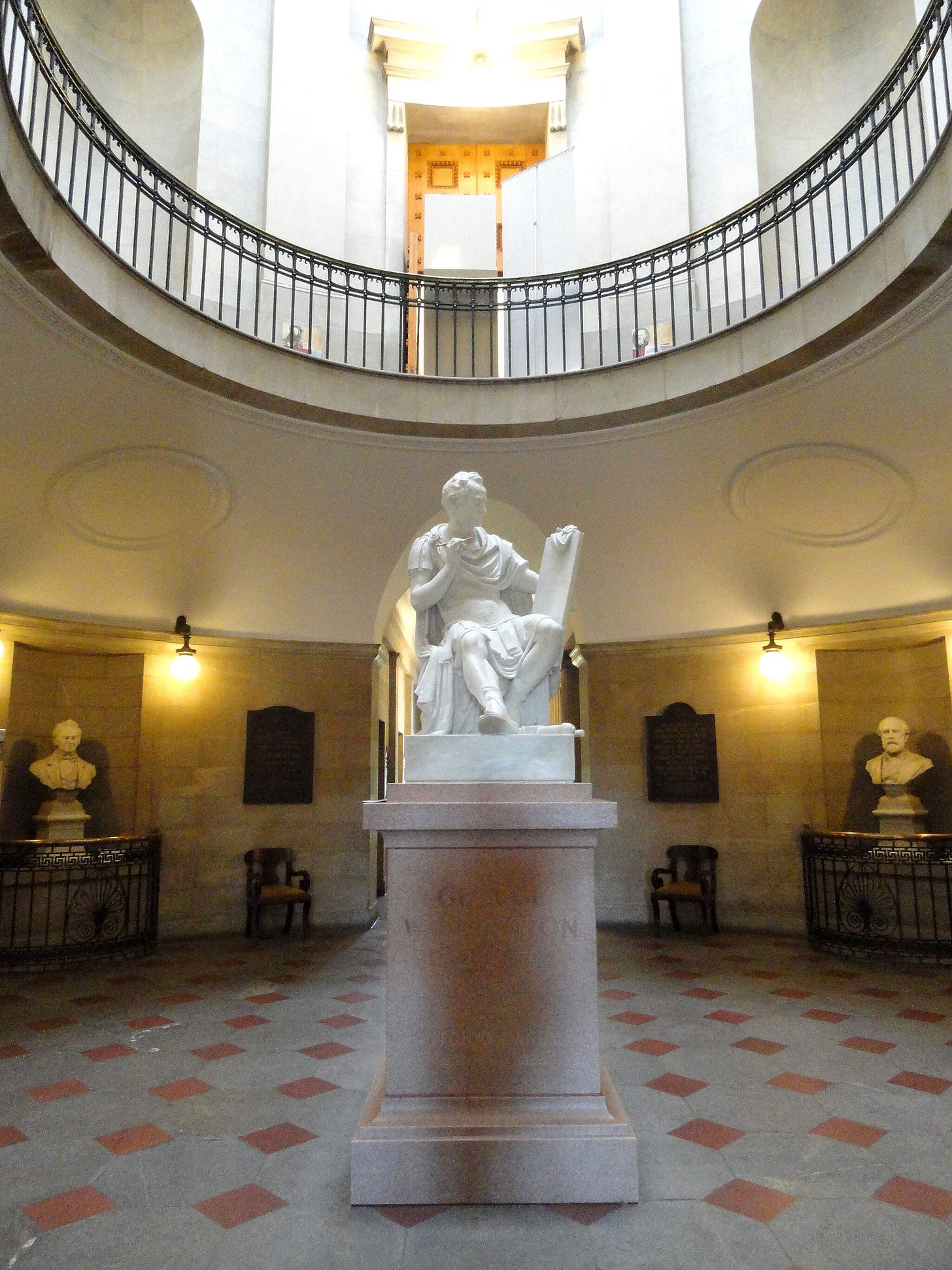
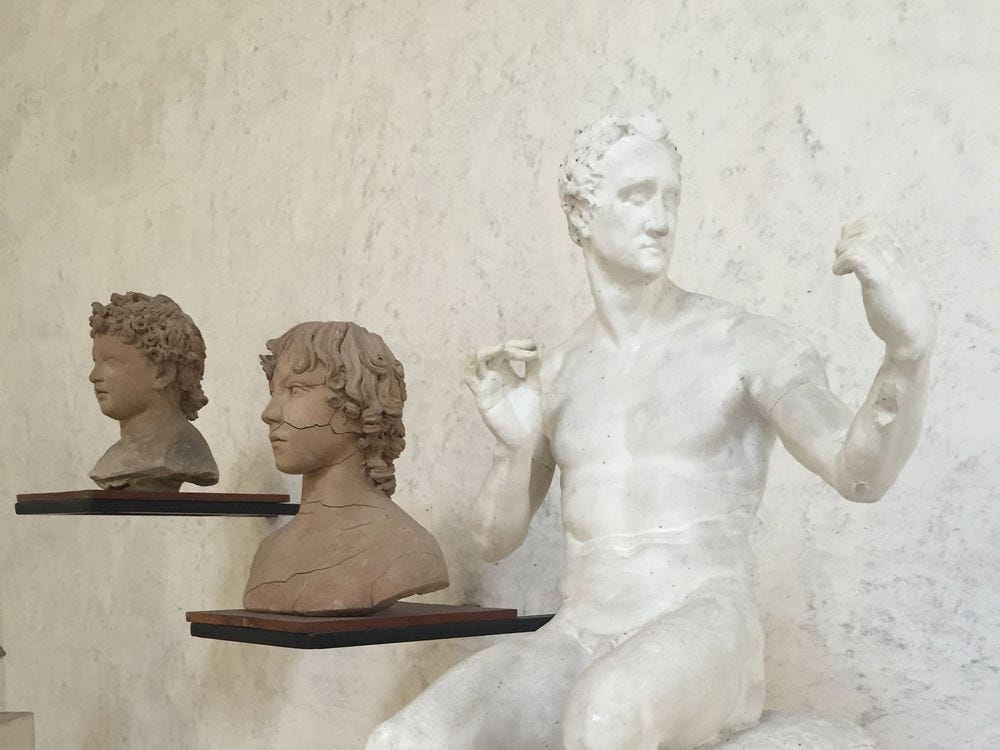
These works are copying the conventions of the Romans, and the Romans were copying the visual language of the Hellenistic style of portraiture. The conventions of this Greek style are known to everyone that loves that oddball mid 2010s microgenre, vaporwave.
But the Romans iterated on these conventions and would periodically move away from idealized/flawless depictions in their portraits. And one of the things I love about the Romans is their concept of verism in portraiture. Wanting to express the experience of age and a certain kind of grit, some portraits were commissioned to make their subjects look like as worn and realistic as possible. The desired effect is that you can see time and hard won experience on their faces. In short, some of these verismo busts make their subjects look extremely hardcore.
But this is about gardening and succulents, which we can now finally discuss with the pre(r)amble out of the way.
I think there’s something similar to veristic portraiture going on with certain solitary succulents. It’s the sort of planting you see in Mediterranean climates like Greece and Italy, and all over California (that the 2 examples from my archive below are from California’s wine country is certainly no accident and I’ll need to write about the dreamy hyper-realism of winery landscapes at some point).
The veristic succulent style is easy to visualize. It’s a cactus in a terracotta pot all by itself in the corner of some sun drenched courtyard, or an aloe perched (somehow not precariously) on a terrace with an ocean view.
Succulents are widely employed for their dramatic and sculptural forms, and this takes on a bolder effect when you isolate one in a pot - I think the added height of the container starts to give it the impression of a pedestal for a bust. And the plant itself can take on the weathered countenance of one of these scowling Romans. This is not to say the plants can’t appear cheerful in this style of planting, as many of them do.
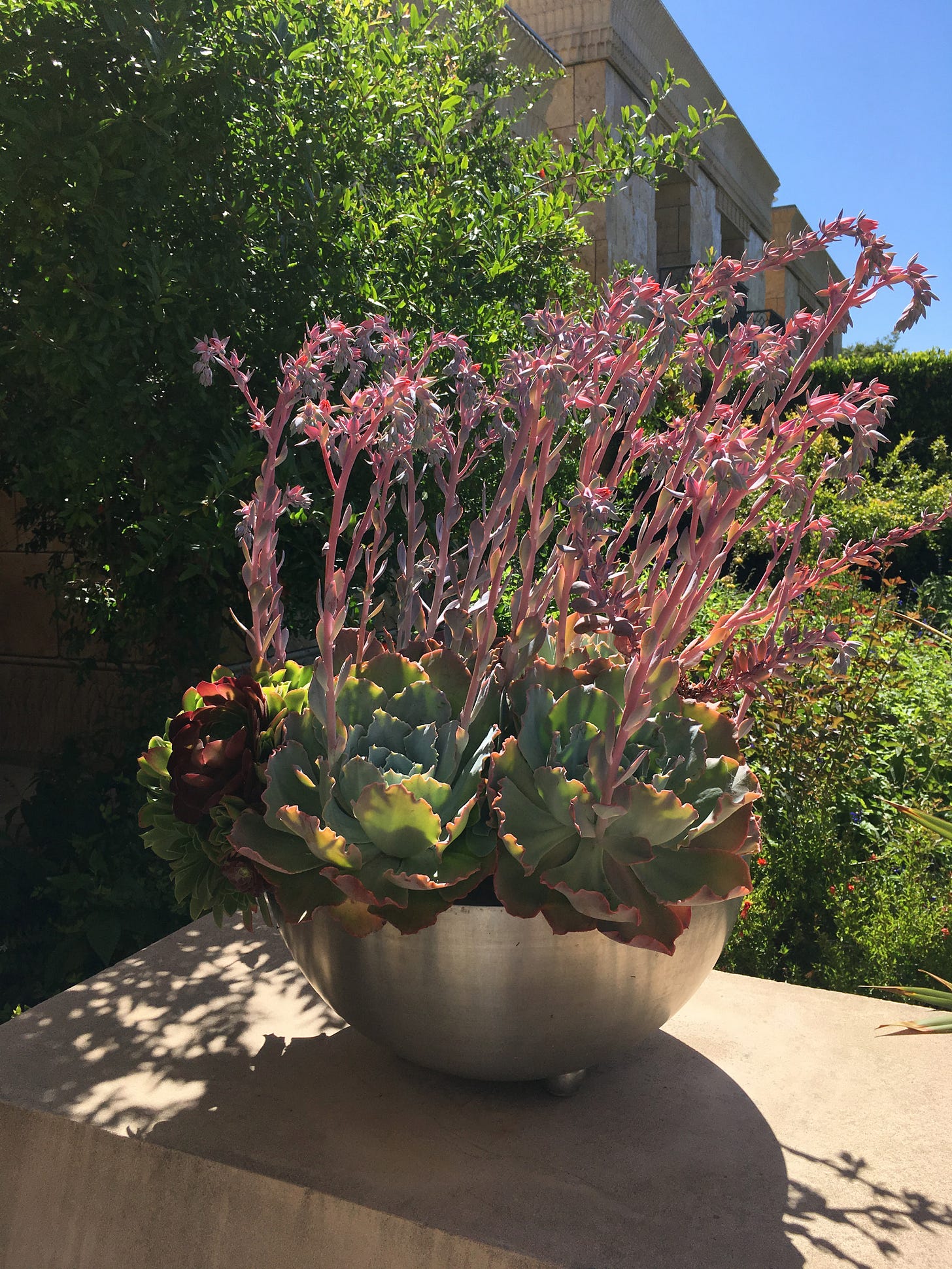
A point of clarification and some guard rails: the aesthetic can’t be achieved by neglecting a planting alone - it needs enough room to grow (so a slightly larger pot to start) and to be exposed to the elements. What is attractive about this succulent verism is that the plant seems to flourish in spite or because of the exposure. The plants are nonchalant! They aren’t waiting for you to round a corner and regard them. They are sitting there waiting for the heat death of the universe. It’s a reassuring visual that time and sunshine alone are what the plant needs (so please stop interfering with the grand design, thank you). It’s a domesticated version of those trees that are older than Christ, with their sclerotic forms to prove it.
So that’s veristic style planting for succulents. A single plant or variety of planting left with benign neglect in a decently sized pot, slowly growing and ossifying in the sun. While I couldn’t find any descriptions or think pieces for this concept elsewhere on the internet, I think the image search algorithm gave me an interesting clue. There’s a lot of stock photography available showcasing the concept.

As a closing thought, here’s the famous Terrace of Infinity at Villa Cimbrone in Ravello. I think this view could be improved by swapping the flowering plants out for some grizzled succulents, which would really just be adding more statues of a different kind.





